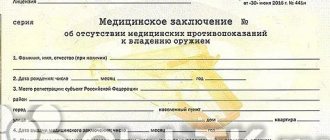What it is
The use of a car today must be carried out within the framework of special regulations.
At the moment, the main such document in our country is the traffic rules.
These were adopted relatively recently and have been edited several times. But it is important to remember that citizens of the country often travel outside the Russian Federation in their own vehicles to other states. In this case, it will be necessary to familiarize yourself with the traffic rules of other countries.
Today, one of the main documents that will need to be taken into account first of all is the Vienna Convention.
It is an international document to which most of the countries existing today have agreed. This convention makes it possible to standardize traffic rules across countries and make them uniform.
At the same time, such a convention resolves several different tasks at once. The place of joint development and adoption of such a document is Vienna, Austria. The original edition was created on 09/08/68.
It is worth noting that in parallel to this convention there is a similar one, but it concerns signs and signals. Later, the treaty regarding this convention was edited. This happened on May 1, 1971, but in Geneva.
Today, the list of countries that supported the adoption of such a convention includes several dozen.
This greatly simplifies traveling around the world in your own or rented car. The main feature of this convention is that driver’s licenses issued under it in the countries that have adopted it will be valid in other participating states.
There is no need to obtain special international ones. At the same time, on March 28, 2006, the format of the certificate, which can be recognized on the territory of other states, was changed.
States have been given 5 years to bring the format of national IDs to a single standard.
Driver's licenses issued on the territory of the Russian Federation since March 1, 2011 can be safely used outside the country. Since such VU are recognized by the countries participating in the Vienna Convention.
For those who received their national driver's license before this date, it will be necessary to obtain a special international driver's license.
The main tasks that this convention solves:
| Indicators | Description |
| Significantly simplifies the process of using a vehicle by a citizen of another country outside the Russian Federation | — |
| Makes the procedure for checking documents of foreigners much easier | since all driver's licenses are unified |
| Reduces the likelihood of accidents | since traffic rules and signs are completely standardized and unified |
Despite such unification and standardization, before traveling to another country, you will still need to familiarize yourself with the traffic rules in force there. There are specifics to using a car in each new region. Knowledge of these specifics will allow you to avoid many problems and difficulties directly related to driving a car.
Many accidents occur outside the country precisely due to simple ignorance and misunderstanding of traffic rules in another country.
Who does it apply to?
Today, the list of countries that have accepted and ratified the Vienna Convention is quite large and includes several dozen. On the map these are indicated as follows:
The following countries have acceded to the Vienna Convention of 1968 as of 2021:
- Austria, Armenia and Azerbaijan, Albania.
- Bahrain, Belarus, Bulgaria, Bosnia and Herzegovina, Vatican City and Brazil.
- Greece, Germany, Denmark.
- Moldova, Monaco.
- Ecuador, Estonia, South Africa (not all countries).
- A lot others.
It is also worth noting that there is a separate list of countries that have signed this convention, but have not ratified it. It is for this reason that before traveling to any country, you will need to familiarize yourself with the traffic rules.
And also make sure that the use of a national driver’s license is generally allowed in a particular country.
If the answer to this question is negative, or the driver’s license was issued before 2011, you should take care of obtaining an international driver’s license. Today this process is simplified as much as possible and does not take much time. Nevertheless, this issue will need to be taken care of in advance. This is the only way to avoid many difficult and even difficult moments.
Before traveling outside the Russian Federation in your own car, you should clarify in advance whether it is possible to use a specific driver’s license to confirm the right to drive a vehicle.
If such a right is absent, then a fairly serious fine will be imposed on citizens who committed the violation. In some countries, such a fine can be more than 1 thousand dollars.
What sources to look for?
Today it will not be difficult to familiarize yourself with the original type of convention under consideration. The original text of this document is presented on many resources on the Internet. It is important to familiarize yourself with the sections of this regulatory document in advance. This is the only way to avoid problems outside the country when using a car.
Knowledge of the law will allow you to avoid violating your own rights. It will give you the opportunity to control them yourself – without the obligatory consultation of a qualified lawyer.
Today, the most optimal solution in terms of searching for information on this matter is:
- Database Garant.
- Consultant.
Countries that have signed the Vienna Convention on Road Traffic are represented in the corresponding regulatory document. It is worth noting that since the registration of this type of documentation, it has hardly been edited.
There are no plans to make any significant changes to it in the near future. Nevertheless, a person planning to leave the Russian Federation in his own car should read the document.
Vienna Convention on Road Traffic Annex 6 contains all the necessary data regarding the countries that have adopted this document and ratified it. Moreover, it is important to note that acceptance and signing do not imply ratification - acceptance at the highest state level of this document for execution.
Therefore, it is important to pay attention to this point and first understand whether ratification is taking place.
It is through standardization that it is possible to achieve a minimum number of accidents in the countries that have adopted such a convention. Moreover, it will be necessary to note that in the countries that have adopted the convention, traffic signs, markings and many other aspects will be similar. This will significantly simplify the procedure of driving a car. Will allow you to avoid many problems.
Use of Russian rights under the Vienna Convention
In 2011, the Russian Federation developed and introduced a new form of driving license that complies with the rules of the signed agreement on international traffic rules. The holder of such a national ID has the right to move freely throughout the territory of countries that have accepted this treaty. The license obtained by the driver before this year allows him to travel outside the Russian Federation to countries participating in the agreement until the expiration of the driver’s license.
If the country that signed the treaty has not ratified it, the treaty does not yet have full legal force, that is, it does not have guarantees of mandatory execution. In such countries, the holder of a national driving license may be required to have an international driving license.
In addition, car rental companies may not allow a driver without an international license to rent a car. They have the right to make a decision about who should rent a vehicle without relying on an international treaty.
Therefore, before going to a country that has signed the Vienna Convention, it is necessary to check whether this country has ratified the treaty and read the reviews of motorists who have already visited this state.
Vienna Convention on Road Traffic as amended
Today, the Vienna Convention on Road Traffic has its own characteristics. This document does not apply to all areas related to traffic regulation. These questions also need to be taken into account before you get behind the wheel of a car in another country.
Otherwise, ignorance of the regulations, rules and legislation of a particular state may cause an accident or other troubles.
Given exchange rates, such situations can result in extremely costly situations. Basic questions that will need to be clarified in advance before leaving the country:
- what it contains;
- which countries are included;
- driver's license information;
- suspension;
- important nuances;
- the legislative framework.
What does it contain
The convention itself is a fairly extensive document, including a wide range of different sections. It includes the following:
| Indicators | Description |
| Preamble to this document | — |
| Chapter 1 | introduction – includes a list of areas in which it is possible to apply this convention |
| Chapter 2 | directly the traffic rules that must be applied to driving in different countries |
| Chapter 3 | What are the conditions for allowing a vehicle to move in another country? |
| Chapter No. 4 | car drivers, the main requirements applied to them |
| Chapter No. 5 | basic conditions for the admission of bicycles, as well as other devices with a suspended engine, to traffic on the territory of other states |
In addition to the main chapters, there is also a wide list of appendices - the information indicated in them is also required to be followed. At the moment, there are many different nuances and features that are directly related to this convention. The following applications are presented:
| Indicators | Description |
| Appendix No. 1 | when is it permissible to deviate from the obligations of admitting trailers, cars |
| Appendix No. 2 | the process of registering cars and other vehicles used in international transport |
| Appendix No. 3 | indicates the need to install a special sign on a car or other vehicle that determines admission to the use of a vehicle on the territory of other states |
| Appendix No. 4 | what special identification marks exist to designate trailers and vehicles traveling internationally? |
Separately, it is worth noting that there is quite detailed and accurate information regarding the technical characteristics of cars and motorcycles used for movement outside the Russian Federation. Quite serious requirements are imposed on the management and technical condition of vehicles. The main sections of Appendix No. 5 containing all such requirements:
| Indicators | Description |
| Chapter No. 1 | braking moments and braking distance are determined for each specific case |
| Chapter No. 2 | the requirements for vehicle lighting devices, as well as other vehicle light signaling items, are considered |
| Chapter No. 3 | other regulations regarding steering, brakes, mirror viewing angles and much more are presented |
| Chapter No. 4 | determines when deviations from standard rules are possible and acceptable |
What features Chapter 12 of the Code of Administrative Offenses of the Russian Federation with comments has, you can find out in the article: Chapter 12 of the Code of Administrative Offenses of the Russian Federation with comments. If you are interested in what the Code of Administrative Offenses contains, read here.
Which countries are included?
The list of countries that have signed and ratified the Vienna Convention on Road Traffic Regulations is quite extensive. This list looks like this:
The designated list of countries is updated annually. There may also be other changes directly related to such a document. That is why it will be necessary to work out this moment in advance. Today you can easily find on the Internet the current version of the convention and the list of countries that have signed and ratified it.
Driver's license information
Separately, it will be necessary to study the issue of driver's licenses - since not all driver's licenses issued on the territory of our country imply the possibility of use in the territory of countries that have adopted the convention.
Today there is no requirement to obtain an international certificate, and citizens who obtained their license before March 11, 2011 can use a national one.
The front side of this document includes:
- personal data of the citizen written in Russian and transliterated;
- place and date of birth of the user of such rights;
- start and end date of the license;
- series and document number;
- open driving categories;
- signature and color photo.
The reverse side includes a table with a detailed description of all the categories presented. A similar type of license is issued in other countries that have adopted the Vienna Convention on Road Traffic Regulations.
If a driver’s license of a citizen of the Russian Federation was issued earlier than 2011 and has a form different from that presented above, he will need to obtain a special international license.
These are valid for 5 years from the date of receipt. But no more than the period of validity of the national driving license. The process of obtaining an international driver's license has certain subtleties and features. The question regarding a driver’s license is described quite accurately and in detail directly in the appendices of the document in question. At the moment, the main provisions that will need to be given attention first are:
| Indicators | Description |
| Appendix No. 6 | indicates what exactly a national driving license is, when its use is justified |
| Appendix No. 7 | international driving license |
Moreover, such a convention regulates in sufficient detail the model for using such a form of law. At the moment, Appendix No. 7 includes the following:
| Indicators | Description |
| Sample page #1 | front cover |
| Sample page #2 | a sample of the inside of the first cover page is installed |
| Sample page #3 | left page |
| Sample page #4 | right page |
The adopted convention is obligatory for compliance in countries that have completed the ratification process. It is important to work out this point in advance. The documentation process is also regulated by this legislative and regulatory document.
After receiving a driver's license, the driver will need to ensure that all the information on it is correct.
Suspension
The question often arises of suspending the regulatory document under consideration in whole or in part. It is worth noting that this process has many different subtleties.
Today, the issue of international treaties is regulated by a special document “Vienna Convention on the Law of International Treaties”.
Video: Vienna Convention on the Law of Treaties
Brief information about the convention
The Vienna Convention was adopted by countries around the world in 1968 . At the time of its adoption, it was signed by 68 states. This document contains information regarding the following topics:
- traffic rules adopted in all states;
- a driver's license giving the right to use cars in the countries included in the document;
- operating conditions for vehicles equipped with a trailer.
At the same time as the convention, a large number of additional documents or annexes were adopted. Among them are the rules for registering a car with the mandatory presence of registration numbers, the type of national rights, as well as the conditions for obtaining this document.
As additions, the type of international driver's licenses, technical conditions regarding the admission of cars for use on the territory of other states, as well as the rules for deciphering road identification signs are considered.
Together with this document, a legal decision was made regarding road signs and light signals.
The Convention is an important document necessary for the training of future drivers, as well as for the standardization of identification in the states where the document was signed.
Important nuances
There is a fairly wide list of important nuances that are directly related to the use of a vehicle outside the Russian Federation. The main nuances that you will need to familiarize yourself with in advance include:
| Indicators | Description |
| If the country has not previously ratified the Vienna Agreement | then it will be possible to use the car in one, but only if you have a special international driver's license |
| If the country is on the list of states that have accepted the relevant agreement | then it is allowed to drive a car if you have a national driving license - the appropriate sample |
It is also worth noting that the process of using a car is allowed only if you have an international-type MTPL policy. Such a policy is designated as a “Green Card”.
The absence of this will not only cause serious financial damage in the event of an accident outside the country. But also the basis for refusal to allow the vehicle to be cleared by customs.
Driver's license information
A citizen of every modern state can drive a car only on the basis of a special document - a driver's license, which is issued in the territory of the country of residence.
To obtain a license, you need to undergo special training at a vocational educational institution, and you also need to pass exams that are provided for by the country’s internal regulations.
Testing of driver knowledge is carried out only by competent employees of the same qualified organization where the future driver was trained.
More on AutoLex.Net:
How to pay for parking in Moscow in 2021? Parking meter, phone, SMS
Such important criteria for drivers as driver age limits, health status and test requirements are developed and established in each state separately. Moreover, each of the documents should not contradict the generally accepted convention .
Driving vehicles on the territory of another state without a special permit is strictly prohibited.
Licenses authorized by law The Vienna Convention, adopted in 1968, relating to driving licenses for people visiting other countries, introduced two categories of driving licenses.
These are international and national rights, with which you can drive cars . Each certificate has its own individual requirements.
Features of national rights
Among the rules regarding the national ID are:
- The document is made of plastic or high-quality paper, usually pink.
- The dimensions of the document are 54*86 mm. This is not a mandatory requirement, but is preferred.
- At the top of the main side is the name of the document, which is written strictly in the national language.
- Personal information about the driver is written in the national language and must be duplicated in Latin letters.
- The front side should contain such important data as the driver’s first and last name, place and date of birth, time of issue of the license and its validity period, as well as the department that issued the document.
- A photo of the owner is required.
- Designates the category of cars that the driver has the right to drive.
- The driver’s personal signature is affixed to the license. It is desirable that it matches the signature in the passport.
On the reverse side of the document, information regarding the available categories of transport is indicated, along with the date of admission and its expiration.
If the driver has the right to drive a car with certain restrictions, for example, wearing glasses, this information must be indicated on the back of the license. Other information may also be indicated, the main thing is that it does not contradict the convention.
Features of the international certificate
If the national document does not have a unified form, then the international driver's license is official annex 7 to the world Vienna Convention.
Among the requirements that the document must meet are:
- rights are issued in the form of a small book with white pages and a gray cover;
- format 105*148 mm;
- the front side displays the following information: the country that issued the document, the series and number of the certificate, information about national rights;
- The full name and seal are indicated.
More on AutoLex.Net:
Why does my car battery drain quickly?
Inside the document, information about the identity owner is indicated . We are talking about full name, date of birth, permanent place of residence and all available categories. As in the rights of the national category, there must be a photo and signature of the owner.
You can drive a car in countries that have signed the Vienna Convention only on the basis of an official national driver's license. The document must fully comply with the requirements of international law.
It should be noted that a modern international license is based only on a national document; therefore, in the process of driving a car, the driver must have two types of rights at once.
International rights are valid only if the national certificate has not expired. If this document has an unlimited period, the international form is issued for a period of three years.
As for other rights, the time of their relevance is based on an agreement between partner countries.
All precise aspects can be found out directly at the embassy of the country where the driver presumably decides to come.
In Russia, in 2011, a new model of driver’s license was introduced, which fully complies with the requirements of the international convention.
If the driver received his license earlier than this period, he will not have to obtain an international license to travel outside Russia.
Previously issued documents also complied with established standards.
The legislative framework
Today, the use of a car on the territory of another state is carried out simultaneously within the framework of several different regulatory and legal documents of the international level. Today these include the following:
| Indicators | Description |
| From 05/23/69 | Vienna Convention on the Law of Treaties |
| Adopted in Vienna on November 8, 1968, as amended on September 28, 2004 | Convention on Road Traffic |
A citizen who wants to travel outside the Russian Federation in his own car will need to familiarize himself in advance with all the nuances and subtleties of the process of using a car within the framework of these documents.
Most of the problems occur due to banal ignorance and misunderstanding of basic legislative norms.
Find out what the technical regulations of the Customs Union on the safety of wheeled vehicles say in the article: technical regulations on the safety of wheeled vehicles. If you are interested in what the Federal Law says about road safety, read here. If you want to know what the consequences of car theft are under Article 166 of the Criminal Code of the Russian Federation, look here.
You will need to become familiar with all the nuances of the Vienna Convention on Road Traffic before crossing the border by car. This way you can prevent major problems.
Important points
Citizens of Russia are strictly prohibited from driving a car on the territory of their country on the basis of an international license . According to Article 41 of the Vienna Road Traffic Convention 1968, the parties have entered into a prior agreement between countries.
These states are not required to prove the validity of the national rights of those drivers who do not live in the country that issued the license or, after issuance, transferred it to another country.
Participating countries that have ratified the convention on traffic rules recognize the national rights of Russian citizens. There is no need to obtain an international certificate.
On March 28, 2006, the format of the national document, which was recognized on the territory of other states, was completely changed by the countries participating in the convention agreement.
The time period for such adoption was 5 years, until new rights were developed and approved.
The new rights issued in 2011 were already fully compliant with the new provisions. All driver's licenses obtained before 2011 are valid until their expiration date.
According to the rules for passing exams and issuing driver's licenses, foreigners who are temporarily staying in Russia can drive cars on the basis of an international driver's license.
The permission is valid only if all entries in the document are duplicated in Latin letters.
National driving licenses that do not comply with the requirements and rules of the Convention must be translated into Russian in the prescribed manner.
Order 403 of the Ministry of Internal Affairs of the Russian Federation as amended
0 3765 The legislator periodically makes changes to existing regulations in order to improve certain areas related to the life of society.
On their basis, the relevant ministries put into action... — Read more —
Order 287 of the Ministry of Transport of the Russian Federation with the latest changes
0 28298 In the coming year, certain standards began to apply in the field of road safety.
They were established by Order No. 287, which was issued by the Ministry of Transport of the Russian Federation on September 28, 2015. The act sets out the qualifications... — Read more —
Order 152 of the Ministry of Transport of the Russian Federation with the latest changes
0 56736 In enterprises that have vehicles, a waybill is used for the purpose of their proper use.
Order of the Ministry of Transport No. 152 regulates the details that must be on the form of this document. In 2021… — Read more —
Suspension
If a person in a particular state that has taken part in the Vienna Convention has violated traffic rules for which a license is taken away, local traffic police officers have the right to take the following actions:
- Take away your license until the end of your sentence or travel outside the state.
- Provide information to the organization that issued the driver's license. This operation is carried out with the aim of limiting the validity of rights in the territory of the country where the violation of the right was committed.
- Set a restriction regarding the operation of a car in the territory of your home country. This is acceptable if the person has been issued an international identity card.
Each of the above actions can be attributed to deprivation of rights, and accordingly is punished strictly according to the law.
The driver should know that operating vehicles with a license that has some restrictions is equivalent to driving a car without special permits.
If certain restrictions on rights have been introduced into the document, the organization that is responsible for the security of traffic in the territory of a foreign state has every right to exercise control over this issue and receive evidence of violation and punishment.
More on AutoLex.Net:
How to check a taxi license in 2021?
Code of Administrative Offenses of the Russian Federation with amendments
0 2239 Regulation of road safety issues is carried out in accordance with the standards of the Code of Administrative Offences.
It has been repeatedly amended to regulate... — Read more —
Automatic driving
The initiative was introduced within the framework of the UN Economic and Social Council (ESS), the Vedomosti newspaper reports, citing materials from the council. Russia's initiative was supported by Belgium, Luxembourg, Portugal, France, Finland, Switzerland and Sweden.
The Vienna Convention, which standardizes traffic rules internationally, was adopted in 1968. According to the initiative, it is proposed to introduce the concept of “automated driving system” into the document. It will be understood as a software and hardware complex that monitors the situation on the road, controls the car and transmits signals about maneuvers. In addition, it is proposed to recognize the automated system by the driver if the vehicle meets the technical and operational requirements of states that have recognized the amendments. As the Ministry of Transport explained to RG, tests of highly automated vehicles are already being carried out on public roads in 13 constituent entities of the Russian Federation as part of an experiment. The Ministry of Transport is actively interacting with the participants of the experiment. Together with leading organizations testing highly automated transport, the possibility of creating additional “advanced” options for conducting the experiment is being explored. We are talking about creating conditions for the commercial operation of drones.
In parallel, over the course of several years, at the UN Global Forum on Road Safety, significant work has been carried out to remove barriers at the level of international documents to the introduction of unmanned technologies. The Russian Ministry of Internal Affairs also participates in this work from the Russian side.
“Currently, the approval of amendments to the Convention on Road Traffic of November 8, 1968 is being processed. These changes will allow the use of unmanned vehicles on public roads,” the Ministry of Transport noted.
In addition, it was decided to form a formal group of experts to prepare a new convention to provide an international framework for vehicle automation.
Tests of highly automated vehicles are already being carried out on public roads in 13 regions of the Russian Federation
In Russia, it is planned to prepare a draft federal law that would formalize the legal relations that arise when introducing unmanned vehicles into the transport complex. Changes are also planned to be made to interstate standards regarding road infrastructure that ensures the safety of highly automated vehicles.
According to the current procedure, the UN ESS secretariat makes proposals to amend the document to the administrative bodies of the countries that have acceded to the convention. Countries must submit objections within a year. If objections are received from less than a third of the countries that recognize the convention, then the amendments will enter into force after six months. All countries will be informed about this.
At the moment, testing of drones on public roads is allowed in some US states, in China, including Beijing, in the Netherlands, Sweden and Germany. Essentially, this is competition for technology. Whoever allows such cars on their roads will further develop the technology and skim the cream. But for this it is necessary to establish appropriate rules and adopt appropriate laws. If only because it is difficult to develop anything without knowing the rules of the game.
In Russia, the operation of unmanned vehicles is now regulated only by a government decree on conducting a corresponding experiment. Moreover, if initially it was possible to conduct experiments with it only in Moscow and Tatarstan, now the geography is expanding significantly. This equipment will be tested on public roads in the Moscow, Vladimir, Nizhny Novgorod, Novgorod, Samara and Leningrad regions. And also in the Chuvash Republic, Krasnodar Territory and St. Petersburg.
But at the same time, the requirement remains that a driver should be behind the wheel of such a vehicle in order to take control in an emergency.
In order to regulate the movement of drones by traffic rules, it is necessary to first develop a law that will generally allow them to operate on the roads.
For example, amend the road safety law to allow such vehicles to travel on highways.
The State Duma has been developing a law “On the trial operation of innovative vehicles” for many years now. If it is adopted, then drones will be allowed to participate in road traffic.
True, it will require a huge number of by-laws. And there is still a lot of work to be done on the bill itself. Moreover, the legal side of the matter raises a large number of questions. After all, any technology fails. How to determine the cause of an accident when it occurs? Lost control? Who?
Who will be responsible in such a situation if no one was driving the car? The owner of this car? But what is his fault, since the car moved on its own, and the owner was not nearby? This means a manufacturer who did not take into account all the points and produced a car that can cause an accident. That is, such machines should generally be produced with a lifetime warranty.
Testing of drones on public roads is allowed in some US states, China, the Netherlands, Sweden and Germany
These are all very complex legal issues. After amendments are made to the Vienna Convention, the legislation of the signatory countries will also need to be changed. And the country that is the first to find legal answers to all these questions and enshrine them in its legislation will ultimately win the drone race.
Unfortunately, there is another serious problem in operating such vehicles. For its confident movement, it requires good, high-quality coverage by communication networks, and 4G is best. And you won’t find 2G everywhere here. Operating drones only inside megacities will not give much impetus to the development of this transport. After all, all the time this topic is being promoted, it is said that it will simplify, reduce the cost and speed up the delivery of goods. And these are long distances, not everywhere covered by cellular communications. So for the development of drones, the development of communication networks is also necessary.
Technical regulations on the safety of wheeled vehicles
0 17981 All countries live according to the rules established by their legislation. To avoid disagreements during interaction, many states unite into unions, including economic ones.
An example is the Customs... — Read more —
Federal Highway Safety Act
0 3707 Today, the use of vehicles on the territory of our country is possible only within the framework of special legislation.
A certain movement mode is established, which affects not only him... — Read more —
Article 166 of the Criminal Code of the Russian Federation on car theft
0 3167 Using a vehicle for any purpose without informing the owner will cause serious trouble.
This situation falls under Art. No. 166 of the Criminal Code of the Russian Federation and implies in a number of cases... — Read more —











